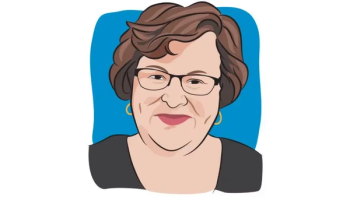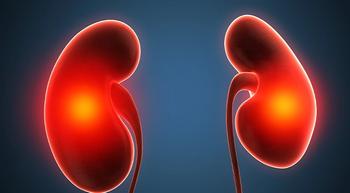
Learning about CML
Attending the 54th annual meeting of the American Society of Hematology in Atlanta was more of a learning opportunity than an occasion to report on major developments in the study and treatment of blood disorders. One cancer type of particular interest was chronic myeloid leukemia. Since the introduction of Gleevec (imatinib) more than a decade ago, doctors have a range of treatment options, and patients are living longer and with manageable side effects. Gleevec still the treatment of choice
Dr. David Marin of the Hammersmith Hospital in London spoke about the importance of using Gleevec as a first-line treatment for newly diagnosed patients. Although more potent, second-generation drugs have been developed since Gleevec became available, it remains the therapy of choice for many doctors. Hundreds of thousands of patients with CML have taken Gleevec worldwide, and more than 80 percent of them have experienced a complete cytogenic response, meaning their blood cells contained no leukemia, after five years of therapy. But, Marin said, although a majority of patients do well on Gleevec, a "significant proportion" will need to try something else because of an unsatisfactory response or unmanageable side effects.Prolonging the time to transplantation
That "something else" may be Sprycel (dasatinib), Tasigna (nilotinib) or Bosulif (bosutinib). Like Gleevec, these are tyrosine kinase inhibitors (TKIs), only more powerful. In former times, patients who required a second-line therapy often had no other choice but an allogeneic stem cell transplantation, which placed them at risk of developing Graft-Versus-Host Disease (GVHD). The introduction of these newer TKIs meant doctors and patients could try them as a second-line therapy or even a third-line therapy before resorting to a stem cell transplantation. Side effects of TKIs
As you might imagine, these drugs, because they are all TKIs, have similar side effects, such as myelosuppression (impaired bone marrow function), fatigue, fluid retention, gastrointestinal disturbances, liver toxicity, muscular pain, joint pain and skin rash, among others. Yet each has unique side effects, as well. Marin described the advantages and disadvantages of each therapy, and concluded that Gleevec was still his treatment of choice and one that he would continue recommending to his patients.Rethinking the concept of cure
Next, Dr. Francois-Xavier Mahon, a hematologist from Bordeaux, France, discussed whether it was possible to consider CML patients who had been successfully treated with TKIs to be cured, and if it was safe to discontinue treatment. He began by talking about what we understand "cure" to mean. For most people, it means the disappearance of disease or all signs of the disease and a return to "normal" health. But the concept that a patient with CML can only be considered cured of leukemia if every last leukemia cell has been eradicated from his or her body may require some rethinking. "We may cure CML patients," he said, "but we may never know whether all leukemic cells have been completely eradicated." Consider microbiology and infectious diseases: the persistence of bacteria does not necessarily imply relapse, only remnant. Mahon suggested adopting the idea of an "operational cure," which allows for the fact that some leukemic cells can be found in the blood of normal individuals.Easy does it
He called CML a "simple model of cancer," because it has a "one-step molecular hit driving the leukemic cells," meaning it's easy to identify and to target. CML begins with a simple genetic mutation, when pieces of DNA in chromosome 9 and chromosome 22 break off and switch places during cell division. A portion of chromosome 9's ABL gene fuses with a portion of chromosome 22's BCR gene, resulting in the BCR-ABL oncogene. This abnormal gene produces bcr-abl tyrosine kinase, a protein that triggers signals in the development of white blood cells. In CML, these malignant cells crowd out healthy cells. TKIs bind to these rogue proteins and "turn off" their activation signal. Mahon described new efforts to safely discontinue treatments, as well as the risks of stopping therapy. Although a good number of cessation studies are under way worldwide, results are still inconclusive and long-term follow-up is needed.The importance of being monitored
Finally, we heard from Dr. Susan Branford of the Centre for Cancer Biology at the University of Adelaide in Australia, who discussed the importance of monitoring patients for therapeutic response to both confirm adherence and determine whether discontinuing treatment would be possible.Branford profiled three patients she had followed through long-term treatment. Each one had initial success taking TKIs, but experienced various ups and downs through the course of their therapy. She demonstrated how molecular monitoring led to an optimal response, and called for development of "good-quality, sensitive and standardized molecular monitoring."




